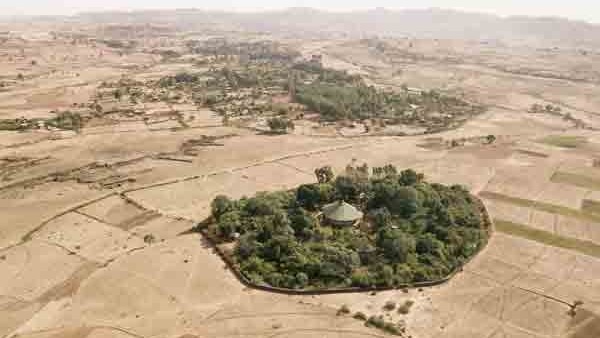
ADDIS ABABA (ENA) The Ethiopian Orthodox Church (EOC) is a model in forest management that has been in the forefront in the fight against deforestation and the multiple environmental threats on biological resources that have brought significant decline in biodiversity in the country, according to a researcher at Ethiopian Environment and Forest Research Institute (EEFRI).
Senior Researcher at EEFRI, Wubalem Tadesse (PhD), told the Ethiopian News Agency (ENA) that “one of the unique features of the Ethiopian Orthodox Church, a model in forest management, is the approach of jointly working with the local community and Church’s followers for having a suitable forest development. What is missing in the nation’s reforestation program has been this one.”
The Orthodox Church forests are national heritages, he added. “I think forests of the Orthodox Church are critical sites for preserving what was left of the vanishing Ethiopian forest habitat. In its over 35,000 churches and monasteries, there are indigenous trees and endemic plants,” he stated.
The researcher, however, argued that some of the indigenous plants in the churches and monasteries are now under threat and declining in numbers. Conservation of forests by only the Ethiopian Orthodox Church has become a burden and difficult to save the precious forests from the pressure of the local people as they are invaded for agricultural land, grazing and destructive timber production, he noted. In this regard, the local communities and government support is vital to sustain the effort of the church in managing the forests and environment reservation, Dr. Wubalem suggested.
The Ethiopian Orthodox Church Development and Inter-Church Aid Commission (EOC-DICAC) Head, Kinde Rufael told ENA that the forest management practice of the church is highly attached with values and beliefs of its doctrine. According to him, the priests of the Orthodox Church have been ensuring that forests stay healthy in close to 35,000 churches and monasteries which cover 75 percent of the forests in Ethiopia.
“The Church has been effectively managing surrounding environments for a long time by using its own religious justifications. Frankly speaking, if you see the current status of the forests in Ethiopia, you will predominantly find the forest resources at most of the compounds of the Tewahedo Churches and monasteries,” the Head stressed.
Evidently, the problem of deforestation is a phenomenon in Ethiopia, especially in the densely settled areas of northern and central Ethiopia with the highest rate of soil loss since the forest coverage of the area is highly degraded as compared to the south and western Ethiopia. The Ethiopian Orthodox Church has managed to save the small and remaining patches of the forest in the country, Kinde added.
“As a country, we have seen recurrent droughts and reduction of land productivity because of climate change,” he said, adding that the church is “trying its best to safeguard at least the biodiversity of the church forests that have been positively contributing for the preservation of the climate.”
According to Ato Kinde, the Church has been implementing a five-year multiple forest and environmental protection projects with 113 million birr in some 20 monasteries in the country.
“The projects are dedicated for priests and the local population around the churches and monasteries in order to ensure their joint economic benefits by engaging in beekeeping, poultry, animal husbandry and other areas of income generation,” Ato Kinde pointed out.
The Ethiopian Orthodox Church is considered champion of forestry in the country, Ato Kinde noted, further stating that the Church has planned to plant 15 million tree seedlings in this rainy season.
Appreciating the government’s recent national campaign to plant four billion trees, the head said the church has already joined the initiative by mobilizing its priests and followers all over the country. It is to be recalled that Prime Minister Abiy Ahmed has announced initiative to plant four billion trees across the country this rainy season. For Dr. Wubalem, the initiative is commendable as Ethiopia’s forest coverage has been declining fast over the past years.
Source: ENA
